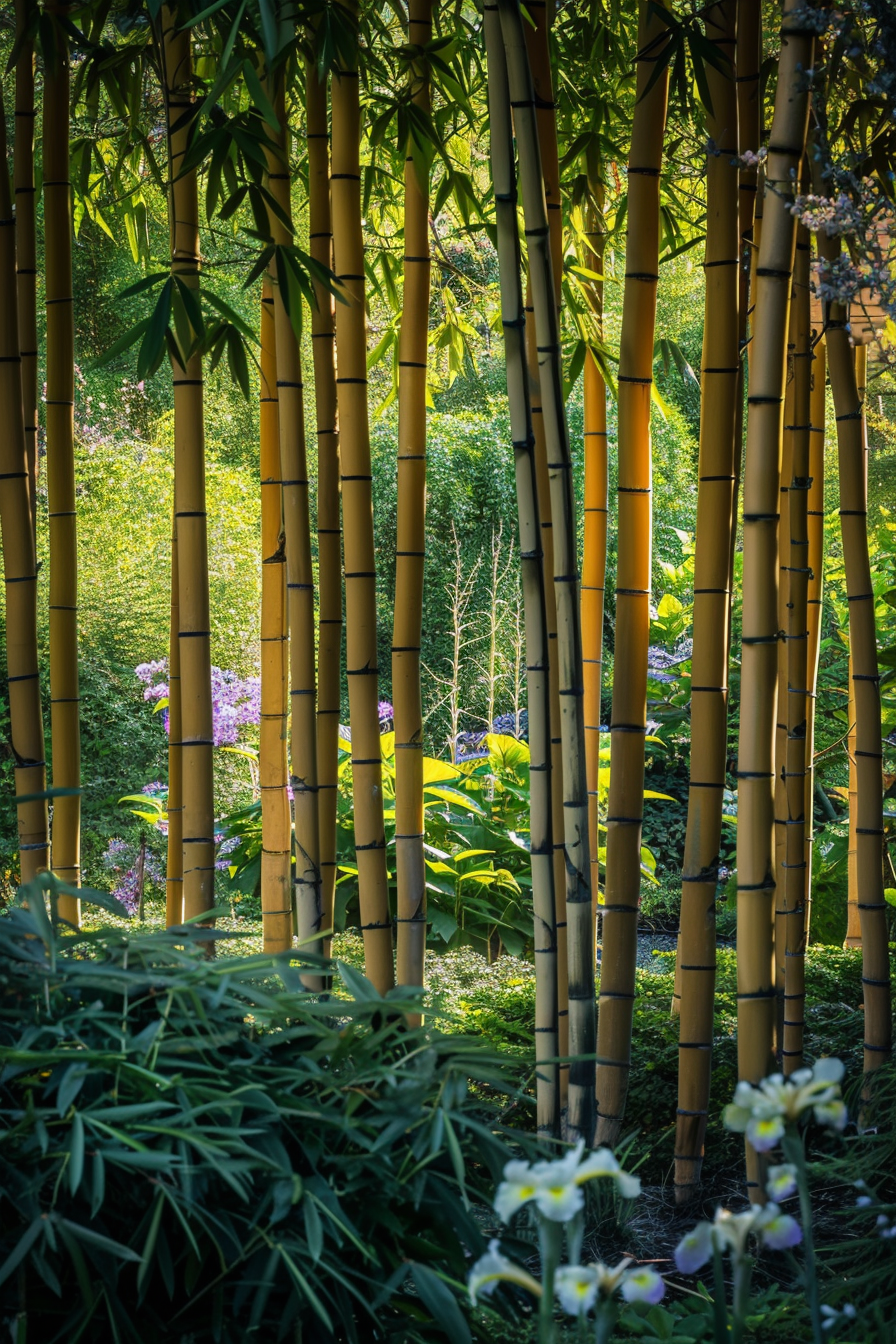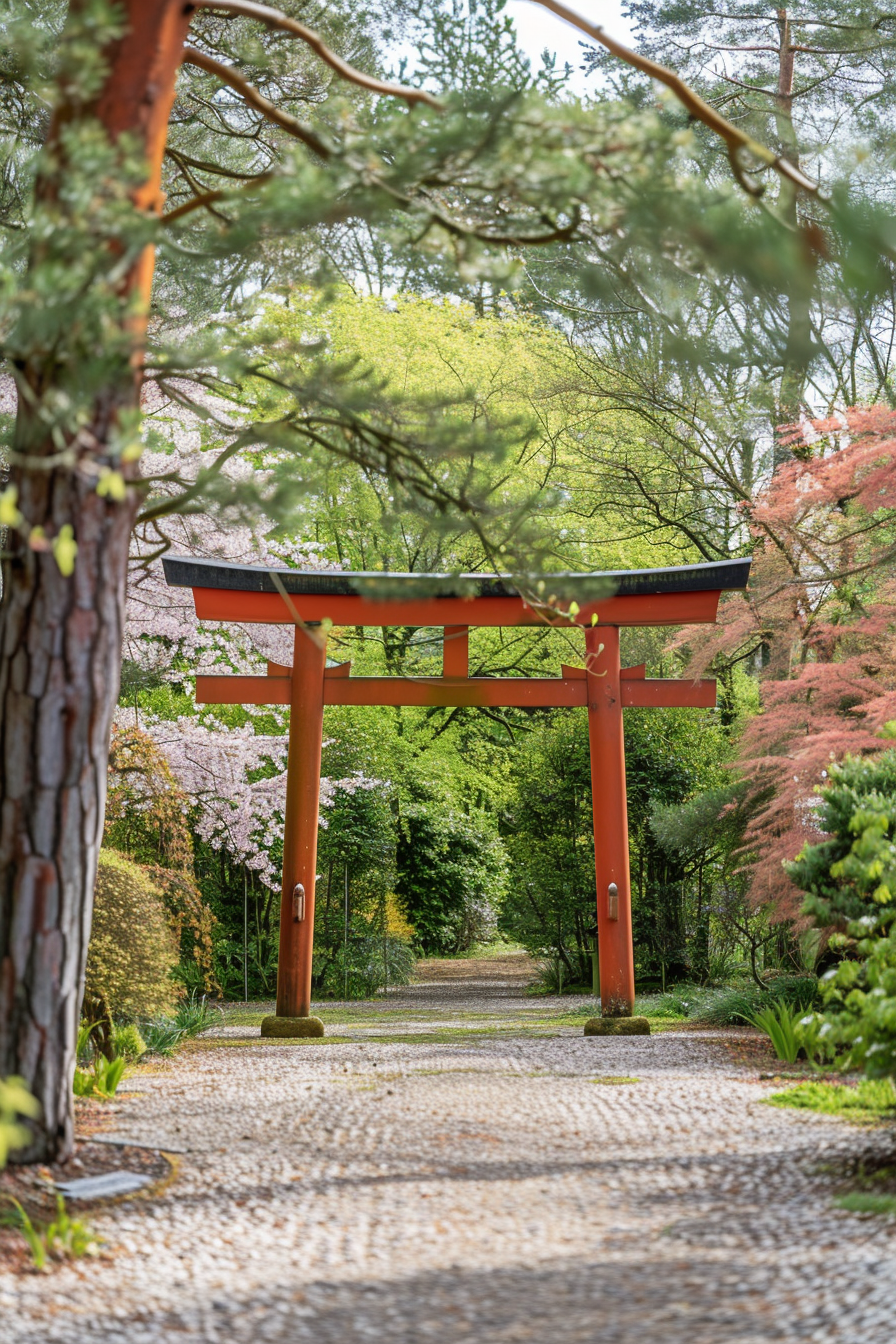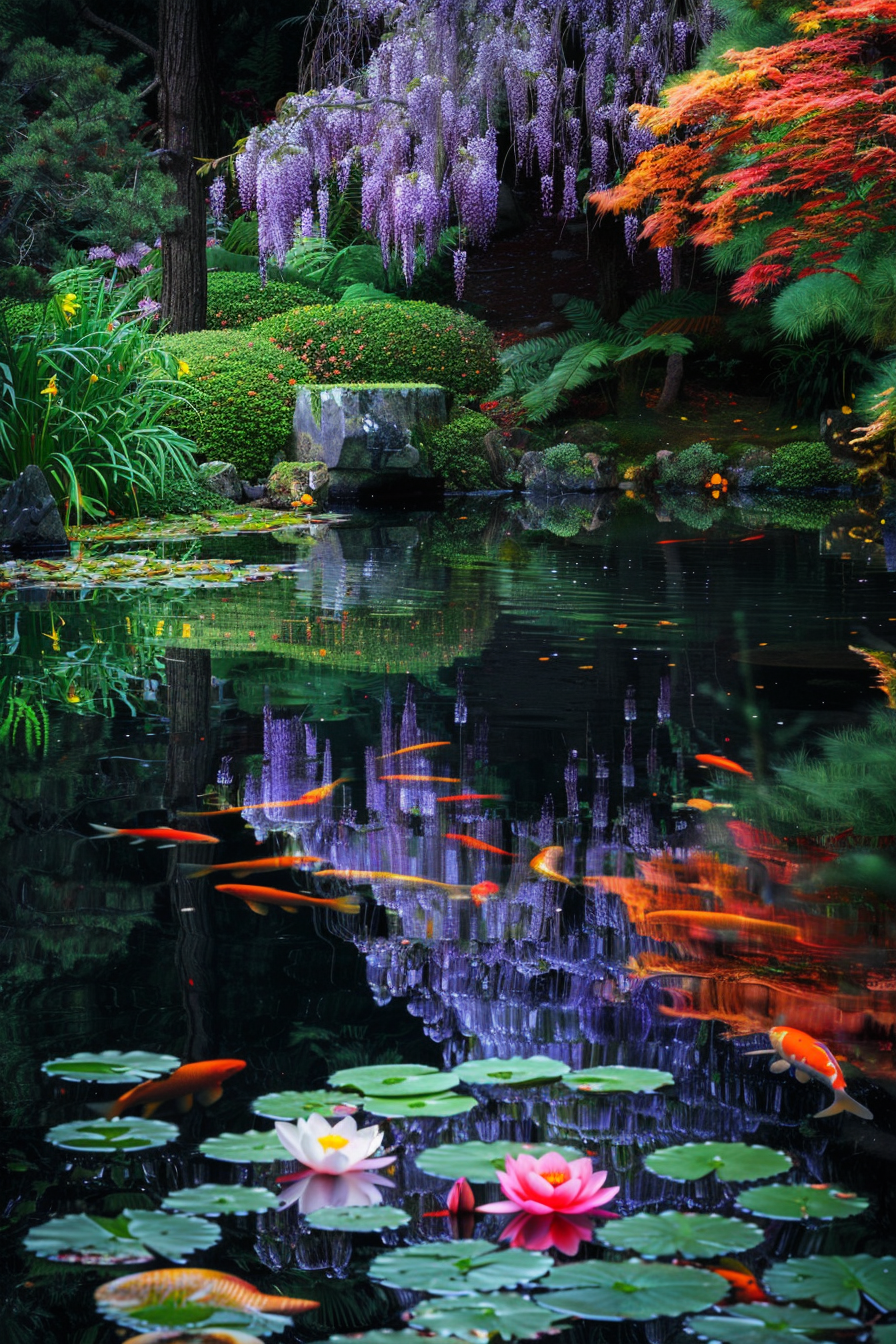The Secrets of Japanese-Style Gardens
Did you know the Japanese garden style isn’t just about plants? It’s about creating harmony between natural elements, architecture, and even the way light flows through a space. Inspired by Zen philosophy, the Japanese garden aesthetic is focused on simplicity, calmness, and the beauty of nature. You don’t need a sprawling yard to bring this vibe into your home—this tranquil style can work wonders indoors, too. Here’s how you can transform your space into a peaceful retreat by incorporating Japanese garden-inspired decor.
Key Elements of the Japanese Garden Style
- Natural Materials
Japanese garden decor is all about using materials that reflect nature. Think wood, stone, and bamboo. Whether you’re adding a small bamboo plant or using wooden furniture, these elements are essential for an authentic look. - Minimalism
Less is more when it comes to Japanese design. Clutter disrupts the sense of peace, so this style embraces minimal decor, keeping only what’s essential or meaningful. Empty spaces aren’t void—they’re part of the aesthetic. - Water Elements
In traditional Japanese gardens, water represents purity and the flow of life. Indoor fountains or small water features can introduce this calming element to your home. Even something as simple as a tabletop fountain or a dish with floating candles can mimic this effect. - Greenery
Japanese gardens often feature carefully pruned plants like bonsai, moss, or bamboo. These plants aren’t just decorative; they’re symbolic of strength, growth, and peace. Choose small, sculptural plants for the indoors, or use natural-looking artificial plants if you’re short on time. - Stones and Gravel
Rocks symbolize mountains, endurance, and permanence in Japanese gardens. Bringing stone or pebble decor inside can ground the space and give it a natural texture. A decorative bowl of smooth stones or a pebble mat at the entrance can instantly bring this element to life. - Soft Lighting
Light is an important part of creating a soothing atmosphere. Natural light is key, but when that’s not available, opt for soft, ambient lighting. Paper lanterns, shoji screens, or diffused table lamps are great ways to create a serene environment without harsh lights.
Budget-Friendly Options
- DIY Paper Lanterns: If you want to add a touch of soft lighting, consider making your own paper lanterns. Paper lantern kits are affordable and easy to assemble.
- Thrift for Wooden Furniture: Look for secondhand wooden furniture or shelves with clean lines at thrift stores or online marketplaces. A fresh coat of stain or paint can breathe new life into these pieces, giving them a natural, Japanese-inspired look.
- Repurpose Natural Elements: For a no-cost solution, bring in stones or driftwood from outside as decorative elements. You can arrange them in a minimalistic tray or along a windowsill for that Zen garden effect.
Pulling the Look Together: Quick Wins
- Layer with Textures: Add a tatami mat, woven rug, or linen cushions to create texture and comfort without clutter.
- Use Shoji Screens or Curtains: To divide spaces or filter light, try shoji-style screens or lightweight curtains. They add privacy without overwhelming the space.
- Small Water Features: A simple water feature on a coffee table or windowsill can provide the sound of flowing water, which enhances relaxation.
1. Embrace Asymmetry with Natural Pathways
Japanese gardens often feature winding paths that mimic the natural, irregular beauty of nature. Instead of straight lines, use stepping stones, gravel, or moss-covered trails to create a sense of discovery.
Plant Ideas: Integrate Prunus serrulata (Cherry Blossoms), Acer palmatum (Japanese Maple), and Pinus spp. (Pine Trees) along the pathway for seasonal color and structure.

2. Create a Zen Rock Garden
Zen rock gardens, or Karesansui, emphasize simplicity and meditative qualities. Use gravel, sand, and carefully placed rocks to represent water and mountains. This minimalist approach provides a serene space for reflection.
Plant Ideas: Surround your rock garden with Rhododendron spp. (Azaleas), Chrysanthemum morifolium (Chrysanthemums), and Pinus spp. (Pine Trees) for a touch of color and texture.

3. Design a Pond with Lotus Blooms
Incorporate a pond as the centerpiece of your garden, featuring Nelumbo nucifera (Lotus). This water element can serve as a mirror reflecting the surrounding plants and sky, creating a peaceful ambiance.
Plant Ideas: Complement the pond with Iris laevigata (Japanese Iris), Paeonia suffruticosa (Peonies), and Acer palmatum (Japanese Maple) along the water’s edge.

4. Add the Elegance of a Tea Garden
A tea garden, or Roji, is a pathway leading to a teahouse, designed to prepare the visitor for a tea ceremony. Use stepping stones, lanterns, and low shrubs to create a serene approach.
Plant Ideas: Line the pathway with Camellia japonica (Camellias), Hydrangea macrophylla (Hydrangeas), and Chrysanthemum morifolium (Chrysanthemums).

5. Introduce a Shaded Bamboo Grove
Bamboo groves offer a sense of privacy and a soothing rustling sound as the wind moves through the leaves. These tall, slender plants can create natural screens or focal points in your garden.
Plant Ideas: Enhance the grove with Wisteria floribunda (Wisteria), Prunus mume (Plum Blossoms), and Iris ensata (Japanese Iris).

6. Highlight Seasonal Changes with Cherry Blossoms
Prunus serrulata (Cherry Blossoms) are iconic in Japanese gardens, symbolizing the fleeting nature of life. Plant these trees to create a breathtaking display of pink blossoms in spring.
Plant Ideas: Pair cherry blossoms with Paeonia suffruticosa (Peonies), Rhododendron spp. (Azaleas), and Acer palmatum (Japanese Maple) for a vibrant seasonal garden.

7. Build a Tranquil Waterfall
A small waterfall can add both visual and auditory appeal to your garden, symbolizing the flow of energy. Use rocks and stones to craft a natural-looking cascade that enhances the garden’s serenity.
Plant Ideas: Surround the waterfall with Nelumbo nucifera (Lotus), Iris laevigata (Japanese Iris), and Acer palmatum (Japanese Maple).

8. Construct an Elegant Arch Bridge
Arch bridges are traditional elements in Japanese gardens, often painted red or left in natural wood. They serve as both functional walkways and aesthetic focal points over water features.
Plant Ideas: Frame the bridge with Prunus mume (Plum Blossoms), Camellia japonica (Camellias), and Rhododendron spp. (Azaleas).

9. Incorporate a Stone Lantern
Stone lanterns add a touch of traditional Japanese aesthetics and can be used to light pathways or highlight features in your garden. Their rustic charm blends seamlessly with natural surroundings.
Plant Ideas: Place stone lanterns among Acer palmatum (Japanese Maple), Hydrangea macrophylla (Hydrangeas), and Wisteria floribunda (Wisteria).

10. Design a Courtyard with Peonies
Paeonia suffruticosa (Peonies) are beloved in Japanese gardens for their lush, fragrant blooms. Create a dedicated courtyard or bed for these flowers to enjoy their full beauty in spring.
Plant Ideas: Combine peonies with Chrysanthemum morifolium (Chrysanthemums), Camellia japonica (Camellias), and Iris ensata (Japanese Iris) for a colorful and fragrant display.

11. Install a Traditional Torii Gate
Torii gates mark the transition from the mundane to the sacred and are often placed at the entrance to Japanese gardens. These iconic structures add a sense of reverence and traditional beauty.
Plant Ideas: Surround the Torii gate with Prunus serrulata (Cherry Blossoms), Acer palmatum (Japanese Maple), and Pinus spp. (Pine Trees).

12. Craft a Serene Moss Garden
Moss gardens offer a soft, verdant ground cover that thrives in shady, damp conditions. They create a tranquil, almost otherworldly atmosphere in your garden, reminiscent of ancient temples.
Plant Ideas: Enhance the moss garden with Wisteria floribunda (Wisteria), Rhododendron spp. (Azaleas), and Chrysanthemum morifolium (Chrysanthemums).

13. Feature a Japanese Maple for Autumn Splendor
Acer palmatum (Japanese Maple) is known for its stunning fall foliage. Plant these trees to enjoy a brilliant display of red, orange, and yellow leaves, providing a dramatic seasonal contrast.
Plant Ideas: Pair Japanese Maple with Camellia japonica (Camellias), Hydrangea macrophylla (Hydrangeas), and Paeonia suffruticosa (Peonies).

14. Add Floating Lotus in a Water Feature
Nelumbo nucifera (Lotus) blossoms are quintessential to Japanese water gardens. These elegant flowers add a serene, floating beauty to ponds and water features.
Plant Ideas: Surround the water feature with Iris laevigata (Japanese Iris), Wisteria floribunda (Wisteria), and Acer palmatum (Japanese Maple).

15. Create a Blossoming Arbor with Wisteria
Wisteria floribunda (Wisteria) offers cascading clusters of purple flowers, perfect for creating a blooming arbor or pergola. This can become a stunning focal point and a shady retreat in your garden.
Plant Ideas: Enhance the arbor with Prunus mume (Plum Blossoms), Paeonia suffruticosa (Peonies), and Chrysanthemum morifolium (Chrysanthemums).

Quick Tips for Achieving the Look
1. Declutter First
Start by removing excess items and unnecessary decor. Keep only what sparks joy or has a clear function. A minimalist approach is crucial to achieving the peaceful balance of a Japanese-inspired home.
2. Add Greenery
Invest in a small bonsai tree, some bamboo stalks, or even a few potted ferns. For those with limited space or a lack of a green thumb, faux plants with a natural look work well too. They instantly give a room a breath of fresh air.
3. Incorporate Stones
A simple bowl of river stones or a decorative tray with pebbles can introduce a subtle Zen touch. If you have an outdoor area, even a small balcony, consider adding a gravel patch to extend the garden theme.
4. Embrace Neutral Colors
Opt for a neutral, earthy color palette. Shades of beige, brown, gray, and soft greens bring the outside in, creating a calming backdrop for your space. Adding natural wood accents, whether it’s furniture or small trays, emphasizes the organic feel.
5. Introduce Water Elements
A tabletop water fountain or a bowl with floating candles can mimic the calming effect of water. If you’re on a budget, even a glass dish with a few petals floating in water can create a tranquil, serene effect.
Final Touches for Seamless Tranquility
- Use simple, clean lines for furniture and decor to keep the space feeling open and airy.
- Incorporate natural elements whenever possible—stones, water, and wood are your best friends.
- Keep the color palette neutral and soft, avoiding overly bright or bold tones.
- Finally, remember to maintain balance and proportion. A single striking element, like a bonsai tree or a smooth stone centerpiece, can elevate the entire space.





